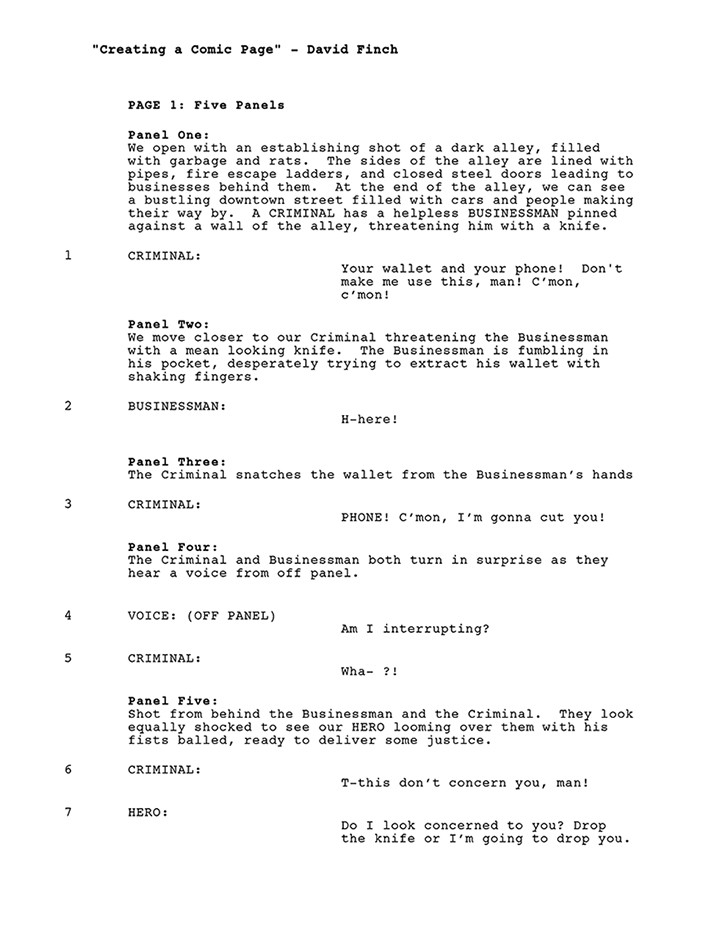In our third lesson, we dive into reading some scripts. As an artist, it's important that we know how to read a script in order to fully understand the story and tone. I'll go over the importance of rereading and determining what key information to look for in each panel, and how to determine our layout based on the scripts we write or receive. I've included three sample scripts to help you in this process.
Look through the scripts I've provided and start to make a game plan for how you want to proceed. Be sure to read the scripts a few times to make sure you understand both the story and how you want to present it. Think about how you would approach each script, and be sure to take note of challenges you may run into. If you have a flair for writing, feel free to write your own script and follow along as well. Page one of the script can be found below. PDFs for page one, and the two other scripts are located under the "downloads" tab above.
Page One








